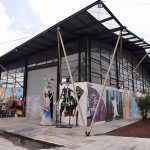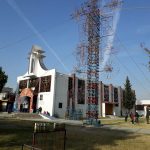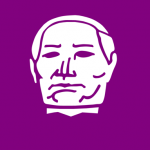Metro Peñón Viejo is named for the Peñón del Marqués. The famous peak was later renamed, to avoid referring to Hernán Cortés, and called simply the “big old rock.” The station icon represents this rocky hill, and it’s stylized the way that some ancient artists might have depicted it. The hill represented, for many years, the easternmost limits of Mexico City.
By the 1970s, though, Mexico City had spread this far. That not only necessitated Metro Line A, but saw communities grow even far to the east. Today, it’s not the busiest station on the line. About 12,ooo passengers pass through every day.
The Metro Peñón Viejo station is technically on the old land grant, the farmers’ fields, of the town of Santa Martha Acatitla, which lays to the southeast. The Peñón itself, the mountain, is passed by the train. It stands to the northwest of the station in a neighborhood called Colonia El Paraiso. This is fitting as the neighborhood is arguably best known for a small resort and spa popular with local kids and families. The spa provided most of the historical information on the Peñón del Marqués through their own Facebook page.
International visitors will likely pass on their way to Santa Martha, to transfer to Cablebus Line 2, (at the Santa Marta station).

Nearest at 0.83 kms.

Nearest at 1.01 kms.

Nearest at 1.11 kms.

The biggest busiest station in the Metro system, to not visit is to miss out on a very busy transit hub.

Mexico City's former farmland of the east...

A front door on Iztacalco and Iztapalapa.

Tepalcates takes its name from the Nahuatl word "tepalcatl", meaning earthenware.

A station borrows the symbol for the City's entire east side...